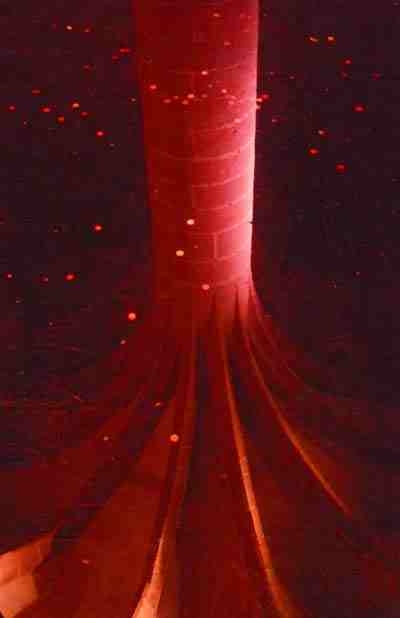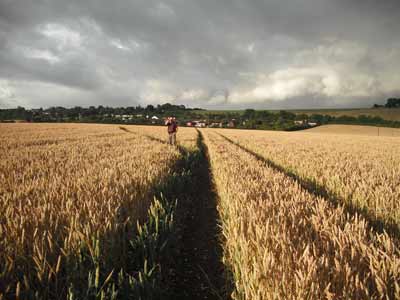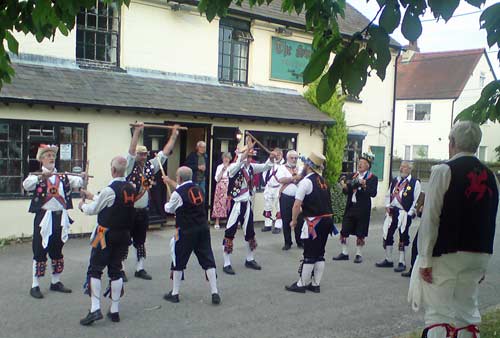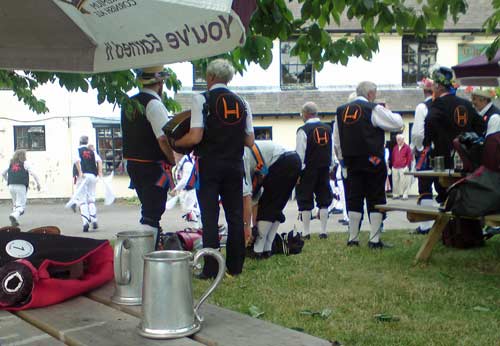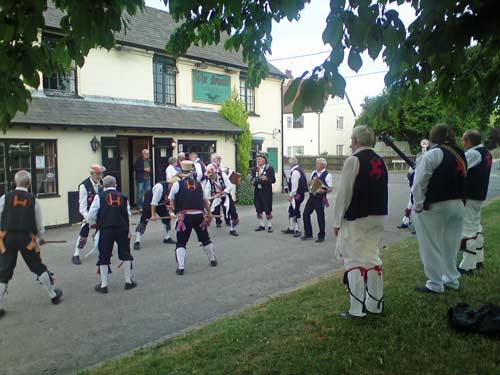Not the Roxy Music album with the famous cover (that James no doubt sneaks a look at from time to time in his CD collection)Â but some ‘research’ I did yesterday.
I’ve done a lot of research into the London settings of ‘The Angel’ and most of what I’ve written is set in the heart of the city so I redressed the balance and went to the Bucks County Show, just north of Aylesbury– which is one of the biggest agricultural shows in the country.
Unfortunately the show this year was held on possibly the most depressing and dark summer days I can remember — cars had headlights on at 5pm — and it followed 24 hours of continuous heavy rain. The showground was a complete quagmire — a mudbath of Glastonbury proportions. (Apparently the Reading festival is already in a similar state.) It didn’t seem to bother most of the visitors — who were wearing wellington boots almost to a person, no doubt the green variety might be their footwear of choice.
The event is so thoroughly immersed in rural and agricultural pursuits and activities that it’s almost incredible that the showground is less than 20 miles from a tube station. (In the 1930s the London Underground extended past Aylesbury and ran within about 5 miles of the show.)
Part of the show is judging the best in breed of sheep, cattle, goats, horses, flowers (a couple of the prizewinners grew their blooms just down the road from me), giant vegetables and so on. Â One may also inspect the many tractors, sprayers, fertiliser hoppers, the new high-lifting vehicles that farmers increasingly use to carry around huge straw bales (not sure what they’re called) and even combine harvesters. It’s more Borsetshire than Buckinghamshire.
There were various rings for showing the animals and the main ring had show-jumping and even, apparently, camel racing.
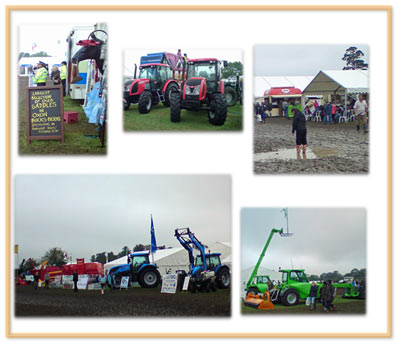
I’d expected all the above but wasn’t expecting quite the broad representation of country life that made up the many exhibitors — like the many arts and crafts stalls, car dealerships, estate agents, solicitors, local newspapers, councils, charities, environmental groups and so on. There was also a sizeable military and police presence — mid-Bucks has a surprisingly big RAF presence with Strike Command in a huge bunker under a hill near High Wycombe and RAF Halton, whose Scottish pipe band performed at the show, is a huge base that trains most of the RAF’s new recruits. Marking the 70th anniversary of the Battle of Britain, a second world war Hurricane fighter aircraft was on display.
There was even a bookshop, although the titles on display didn’t include the latest Guardian books page recommendations — instead I noticed a whole book devoted to making your own compost among the many gardening titles plus a good selection of books on steam locomotives and the second world war.
Naturally, this being a huge farmers’ marker in itself, there was a great selection of wholesome, locally produced artisanal produce in the food tent. From the farmer P.E.Mead and Sons, I bought a bottle of locally grown (and pressed) rapeseed oil. It’s apparently better for you than olive oil — rape is a strange plant as it looks stunning when flowering in the late spring but the plants are pretty ugly later on with their scruffy little horizontal seed pods. I had a chat with one of the Jenkinson brothers from Chiltern Brewery who recognised me and I bought a couple of bottles of their excellent Lord Lieutenant’s Porter.
All rural life was represented and there was hardly a reference to anything metropolitan or, perhaps worse, suburban, even though the show was in a region that’s officially classified as one of the three most densely populated in Western Europe. Yet there was evidence that one organisation was as effortlessly at home in the muddy fields in Buckinghamshire as it was in the heart of the city when I visited its coffee shop on Monday on Oxford Street in London — John Lewis.
John Lewis and Waitrose had a marquee which was well worth visiting just on account of the food samples they were giving away — strawberries and some very nice cheeses. A few of their suppliers shared the tent, including a fascinating beekeepers’ display of a glass-walled hive.
The presence of John Lewis was interesting because, like the tube and commuting, it brings together the two apparently disparate worlds of city and agricultural show rural yet it’s by no means a universal denominator — its customers are almost completely middle-class with a comfortable income, they need to be if they buy their groceries at Waitrose.
I’ve already used a couple of references to John Lewis in what I’ve written so far and perhaps I’ll consciously carry this on as a bridge between the two ostensibly very different worlds that my characters inhabit. But under the surface there are a number of similarities between inner-city existence and the rural life. There’s the same economic polarisation between rich and poor and, as I found with the Bucks Open Studios fortnight, there are as many, if not more, artists working away in rural areas (not just the obvious places like Cornwall, the Suffolk coast and Pembrokeshire) as there are in Hoxton or Hackney Wick.


